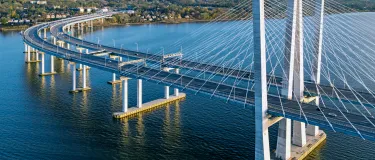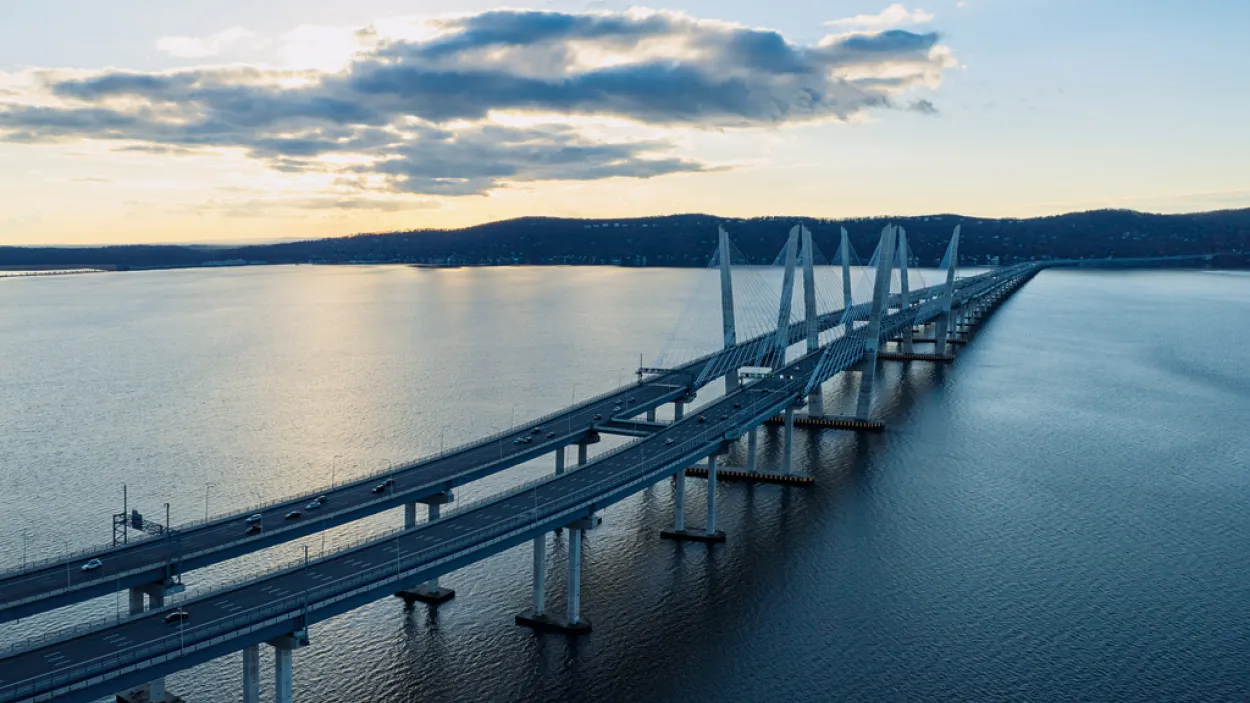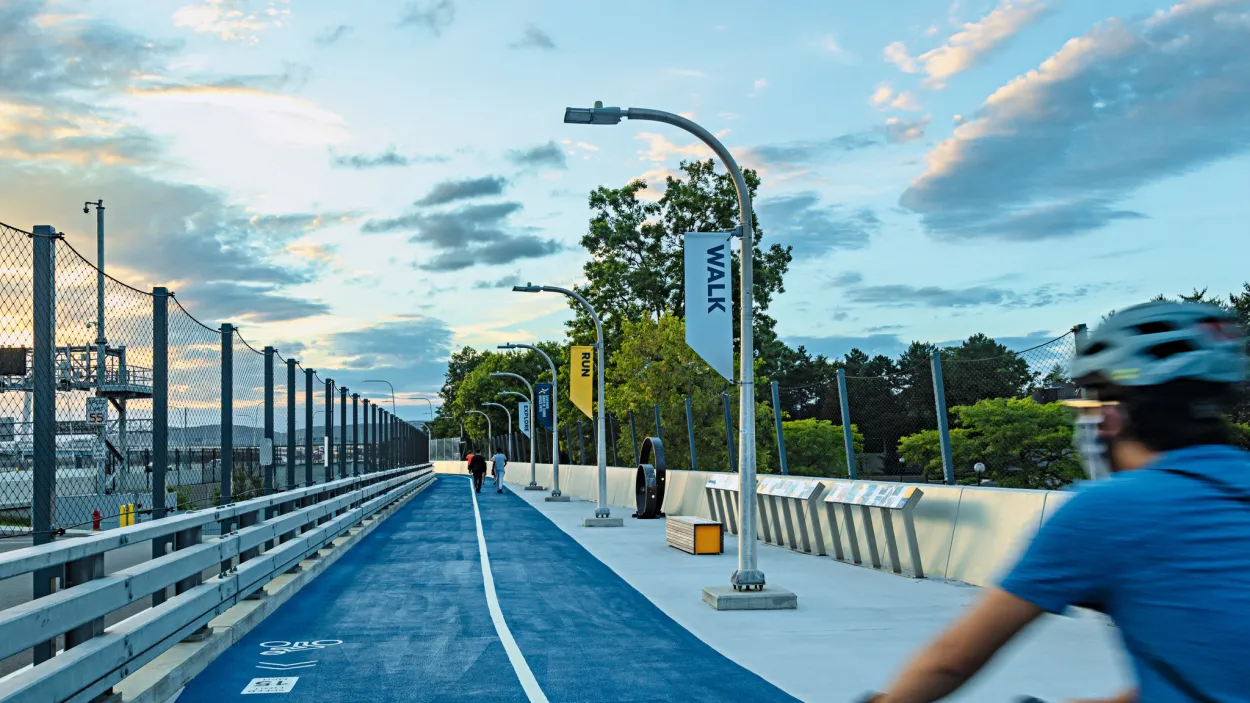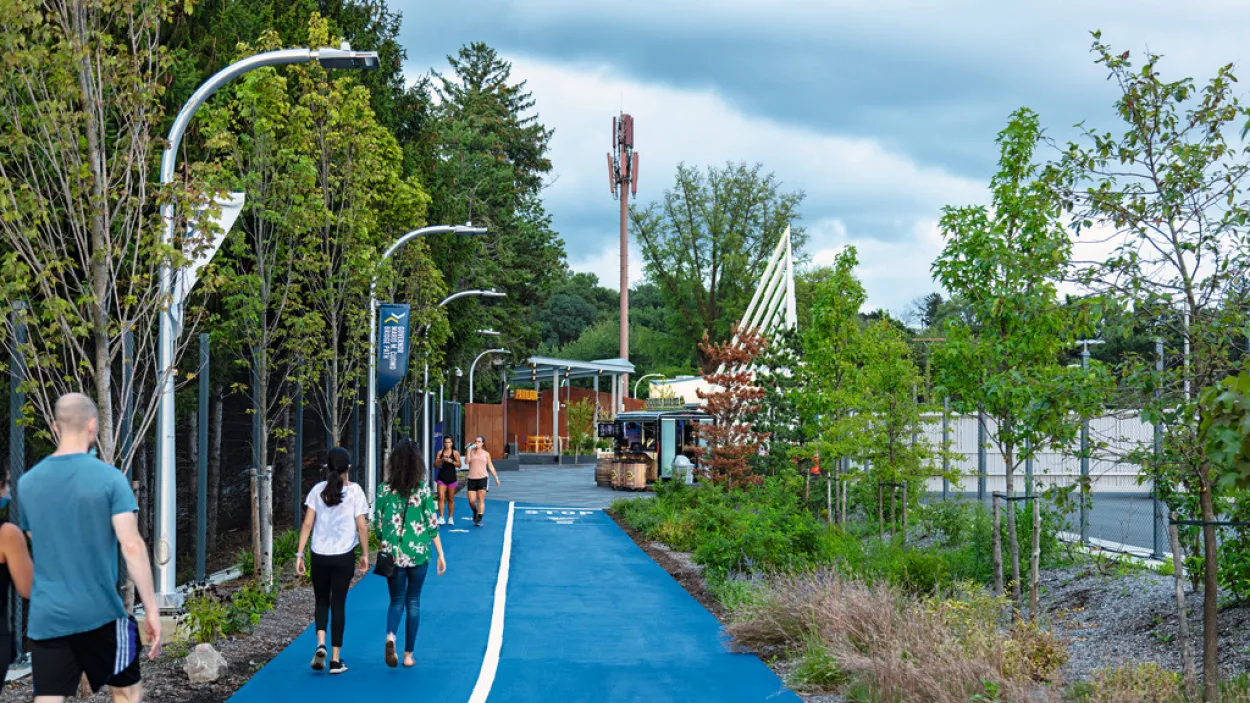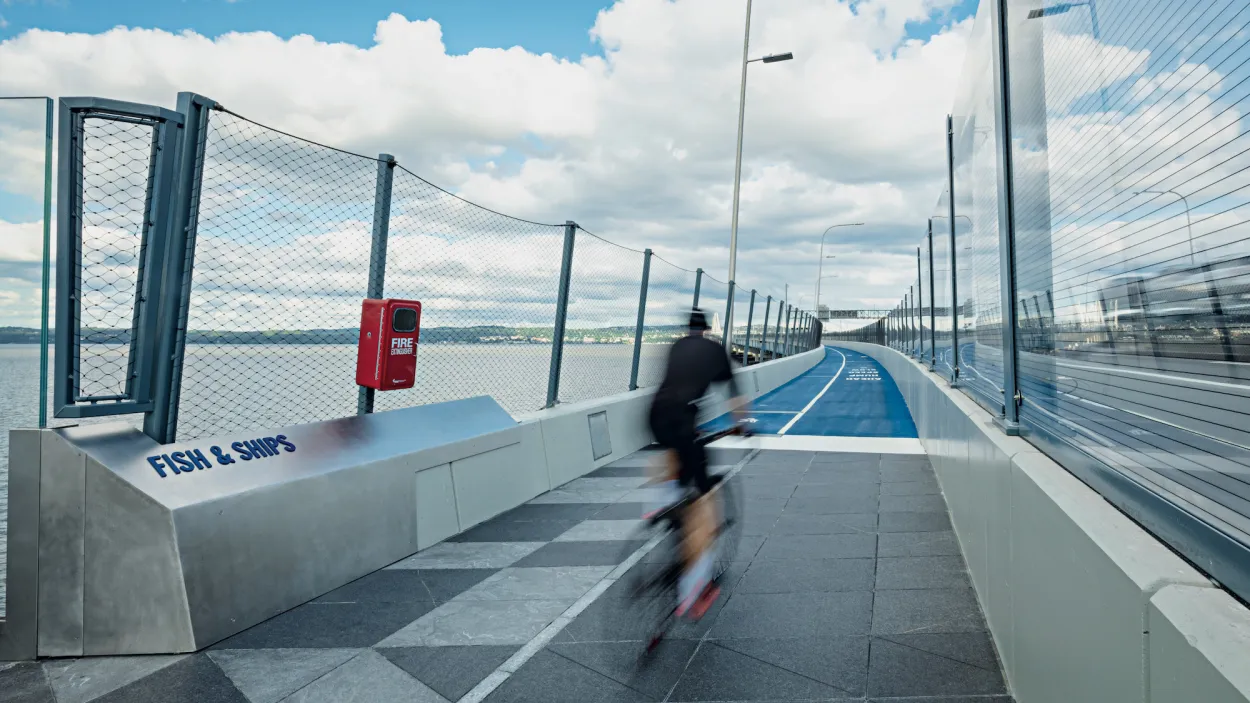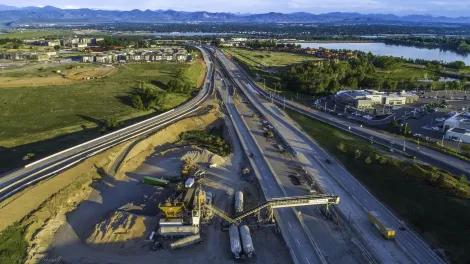Stronger and Longer Lasting with Blended Cement: Mario M. Cuomo Bridge
As our transportation infrastructure continues to age and deteriorate, greater attention is being given to life-cycle costs and the use of extended-life concrete to build longer-lasting, low-maintenance bridges.
Spanning three miles across the Hudson River, the Mario M. Cuomo Bridge’s graceful S shape helps connect key areas of the lower Hudson Valley. Expected to last only 50 years after it opened in 1955, the bridge’s intended service life has expired. In 2011, a decision was reached to replace the Mario M. Cuomo Bridge with a state-of-the-art bridge that would last at least a century, alleviate regular traffic jams and improve driver safety conditions on a bridge plagued with frequent accidents, narrow lanes and a lack of shoulders.
The Challenge
With the New NY Bridge being such an integral transportation link for commuters and businesses in the greater New York metropolitan area, it was very important to achieve the highest possible performance from the concrete used in the structure. The mixtures had to meet models that were unique to this project in the U.S. (fib Model Code for Service Life Design and NT Build 492), including durability requirements for ASR, delayed ettringite formation (DEF), sulfate attack, freeze-thaw damage, shrinkage and thermal control in mass concrete sections. They also had to maintain a rheology that would allow for delayed setting and for flow through a very tight reinforcement mat.
The Solution
To make the best decisions on ingredient selections for the mixture, Holcim partnered with TZC to be a technical resource on which materials—including various local aggregate sources, different admixtures, fly ash and slag—would work best together in producing the best concrete for the project.
Over the course of several months, the TZC materials division and Holcim collaborated in evaluating the composition of various blended cement mix designs at a concrete testing laboratory in Whitehall, Pennsylvania. This performance evaluation included sophisticated life-cycle analysis and testing of different blended cement mix recipes with numerous aggregates and admixture combinations. The analysis included tests for compressive strength, permeability, durability, flowability, shrinkage, slump and consistency.
The Results
Upon successful completion of the performance assessments, which were validated by an independent third-party testing laboratory, the project team decided on a 9,000-psi HPC with a high slag content that would meet all the stringent requirements for strength, long-term durability, low heat of hydration, and excellent ASR mitigation and sulfate resistance.
This final HPC for constructing the bridge’s towers, piles, columns, caps and piers contained a 36-64% blend of Holcim Type I/II portland cement and slag cement. High replacement levels of slag cement in properly proportioned mixes help control shrinkage, creep and thermal cracking in mass concrete structures.





